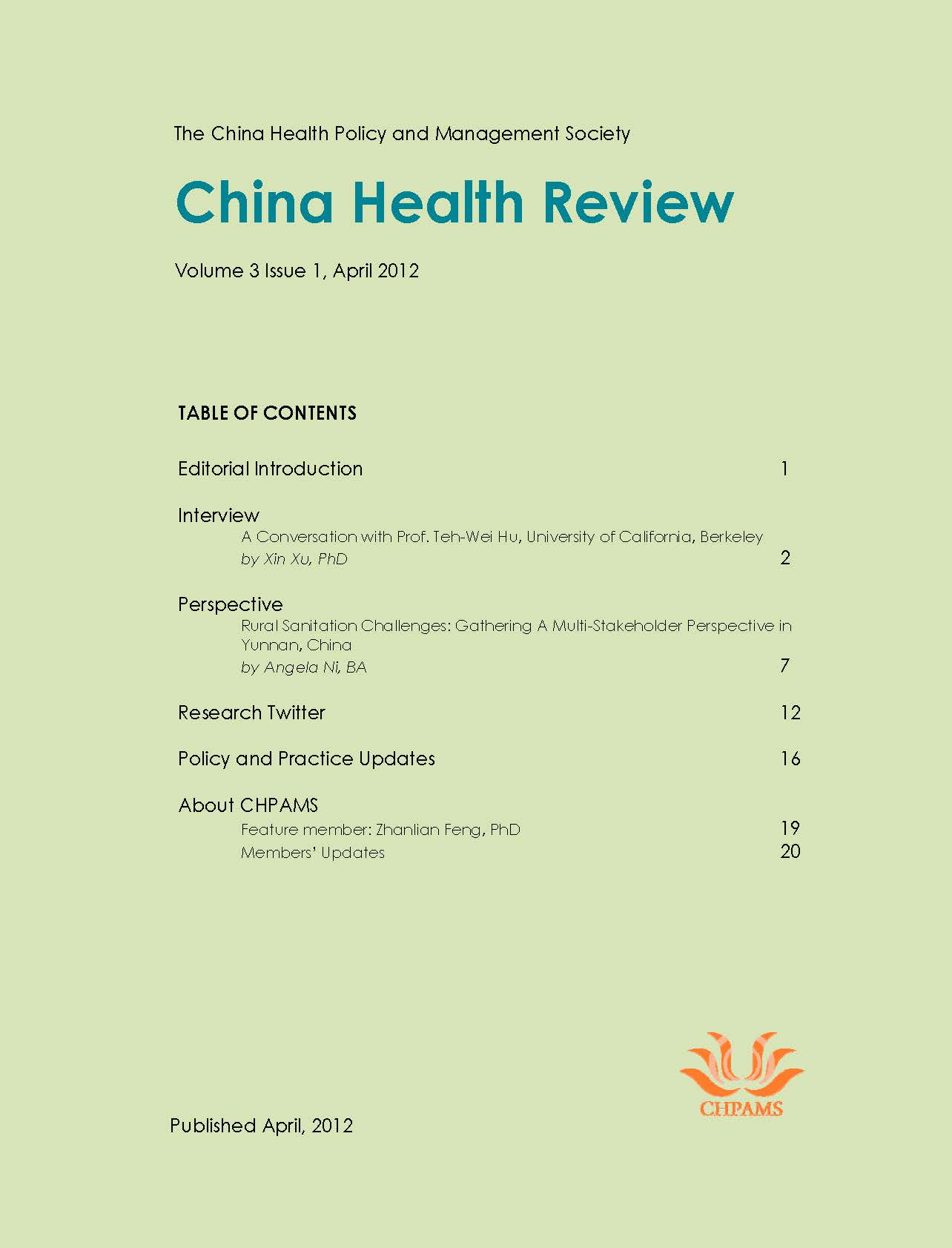RURAL SANITATION CHALLENGES: GATHERING A MULTI-STAKEHOLDER PERSPECTIVE IN YUNNAN, CHINA
Palavras-chave:
Biodigester, public health, rural healthResumo
This paper examines the adoption and use of “biodigesters”, a simple waste-to-energy toilet technology in China. Through interviews with stakeholders directly involved and impacted by water and sanitation development in southwestern China, this paper explores the incentives and barriers to scaling-up biodigesters in rural China. It further examines the extent to which biodigesters are in-line with China’s national and local public health priorities, as well opportunities to establish best practices in the emerging private and not-for-profit sectors. After four decades of use in China, the successes and shortcomings of biodigesters are known, and the experience offers valuable lessons to worldwide rural health development and sanitation campaigns.Referências
Barclay, E. (2010, May 6). China Turns to Biogas to Ease Impact of Factory Farms. Environment 360 accessed on January 1, 2011 from http://e360.yale.edu/feature/china_turns_to_ecological_biogas_production_to_ease_impact_of_factory_livestock_farms/2338/
Eisenberg, A. (2011, Aug 13). Their Mission: To Build a Better Toilet. New York Times accessed on December 11, 2011 from http://www.nytimes.com/2011/08/14/business/toilet-technology-rethought-in-a-gates-foundation-contest.html?_r=1&emc=eta1
KPMG China. (2011). China’s 12th Five-Year Plan: Healthcare Sector.
Man, J.C., & Hong, Y.H. (Eds.). (2010). Lincoln Institute of Land Policy. China’s Local Public Finance in Transition. November 9, 2010. Accessed on November 30, 2011 from: http://www.lincolninst.edu/news-events/news-listing/articletype/articleview/articleid/1604/china’s-local-public-finance-in-transition
Ma, S., & Sood, N. “A Comparison of the Health Systems in China and India.” RAND Corporation, p. 14.
Ni, A. (2011, Feb 10). “A Story of Renewable Energy Use in Rural China, PLOS Medicine Community Blog.” Speaking of Medicine on Public Library of Science (PloS) online. Posted here: http://blogs.plos.org/speakingofmedicine/2011/02/10/a-story-of-renewable-energy-use-in-rural-china/
Remais, J., Chen, L., Seto, E. (2009). Leveraging Rural Energy Investment for Parasitic Disease Control: Schistosome Ova Inactivation and Energy Co-Benefits of Anaerobic Digesters in Rural China. PLoS ONE 4(3): e4856. doi:10.1371/journal.pone.0004856.
Rose, G. (2008). The Big Necessity: The Unmentionable World of Human Waste and Why it Matters. New York: Metropolitan Book.
Tang, D. (2011, Mar 29) Time to clean up Chinese rural area pollution. Xinhua.net accessed on April 11, 2011 from http://news.xinhuanet.com/english2010/china/2011-03/29/c_13802410.htm
United Nations. (2006) World water and sanitation crisis urgently needs a Global Action Plan. Accessed on January 1, 2011, http://content.undp.org/go/newsroom/2006/november/hdr-water-20061109.en
Watts, J. (2011, Feb 9). Chinese farms cause more pollution than factories, says official survey. The Guardian. Accessed on December 1, 2011 from http://www.guardian.co.uk/environment/2010/feb/09/china-farms-pollution
Whines, M. (2010, Apr 4). Spring Harvest of Debt for Parched Farms in Southwest China. New York Times. Accessed May 21, 2011 from http://www.nytimes.com/2010/04/05/world/asia/05china.html.
Zhang, R., Eggleston, K., Rotimi, V., Zeckhauser, R.J. (2006). Antibiotic resistance as a global threat: evidence from China, Kuwait and the United States.” Global Health 2 (6): doi:10.1186/1744-8603-2-6
Zhang, Q., (2010) Rural biomass Energy 2020 in the People’s Republic of China. Mandaluyung City, Philippines: Asian Development Bank. Accessed on Dec 14, 2011 from http://beta.adb.org/publications/rural-biomass-energy-2020-peoples-republic-china

